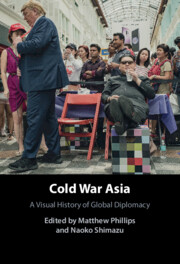To celebrate the Golden Jubilee of the 1955 Asian-African Conference, the Indonesian government invited 106 states, representing some 4.5 billion people to attend the Asian-African Summit in Bandung and Jakarta in April 2005. Those present celebrated the Dasa Sila Bandung, known in English as the Ten Principles of Bandung. Some eighty-nine countries were represented by Heads of States or ministers. Secretary-General of the United Nations Kofi Annan was there, too, with his wife Nane whose dress was monochromatic in the signature light blue of the UN flag, as evidenced in the many photographs of the dignitaries re-enacting the famous walk on Jalan Asia-Afrika (Asia-Africa Road) in Bandung in front of Gedung Merdeka (Freedom Building). On the front row of the ‘walk,’ we see President of PRC Hu Jintao, Indonesian President Susilo Bambang Yodhoyono, Indian Prime Minister Manmohan Singh, with their wives also sharing the moment (see Figure 1 above). Ten years later in 2015, on President Joko Widodo’s invitation to the Second Asian-African Summit, the leaders of the seventy-seven states gathered in Bandung yet again to commemorate the 60th anniversary of the Asian-African Conference. Thirty-four states were represented by heads of states and governments, with the Indonesian president, Jokowi, walking side by side with Xi Jinping and Malaysia’s Najib Razak, all with their wives, on the front row. In the twenty-first century, the Global South seems to trace back its collective genesis to that one week in April 1955 when the Asian-African Conference was held in Bandung.
This volume is a critique of the Bandung narrative and the monopolistic position it is seen to occupy in global diplomacy, epitomised by what has been described above. In general, it is critical of the heavily state-centric bias that the Bandung narrative tends to espouse. At the bottom line, the volume positions itself as offering an alternative narrative in the form of ‘Afro-Asianism’, because ‘Bandung’ should not be the only lens through which to conceptualise and understand the highly dynamic and volatile period of decolonisation in the post-war years. The impetus felt by this Collective to challenge the centrality of the Bandung narrative is a welcome development, mostly telling of the changing times, reflecting a major shift in the literature of the last two decades.
